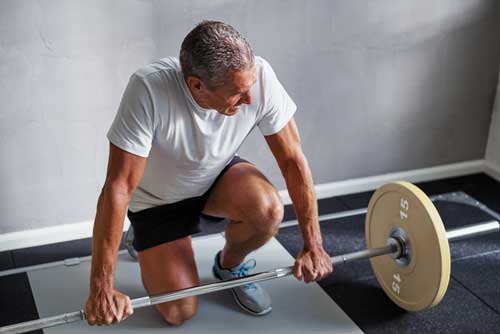It’s long been conventional wisdom in the world of fitness that you can’t get into good physical shape without some suffering.
Thus, the well-worn expression: “No pain, no gain.”
But the science shows something different, according to physical therapist Heather Henry. She’s with University Hospitals Avon Health Center in Avon, Ohio.1
Post-exercise soreness is due to microscopic tears in muscles, she says. Pain is produced as the tears heal.
“There’s no evidence that shows individuals with muscle soreness get stronger versus those who don’t,” said Henry.
Henry explained that “muscle soreness is a process of growth for the body.” But it’s not a necessary ingredient for building strength.
There are better ways than pain to gauge the effectiveness of a workout. These include improvements in speed, heart rate, and endurance over time.
Soreness isn’t a given when you work out, she said. Whether you hurt depends on various factors, including your physical condition and level of activity.
Does Stretching Reduce Exercise Soreness?
Henry points out that soreness is often the result of a new exercise routine. That’s because you’re using different muscles than you did before.
She suggests resting longer between sets than you normally would when doing new exercises.
What about stretching? It’s often mentioned as a way reduce muscle pain.
Multiple studies have shown stretching “does nothing to prevent delayed onset muscle soreness,” Henry said.
Unless you’re experiencing really bad pain, don’t use it as an excuse to avoid your next workout. It will usually lessen once you start moving. It can also help to start workouts with a warmup of 10 to 15 minutes of moderate aerobic exercise, said Henry.
The therapist emphasizes that if you are in intense pain you should not force yourself to continue exercising.
If you accidentally overwork a muscle or injure yourself, Henry recommends massage and compression or applying ice to the site.
Related Articles
One Hour of Exercise a Week Prevents Depression
One Type of Exercise Stops Migraines
Like this Article? Forward this article here or Share on Facebook.
References:
1 https://consumer.healthday.com/fitness-information-14/misc-health-news-265/physical-therapist-challenges-no-pain-no-gain-theory-729919.html

